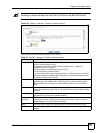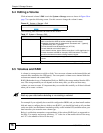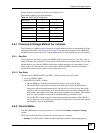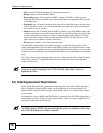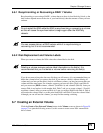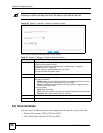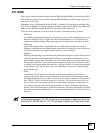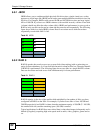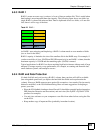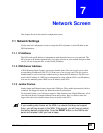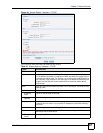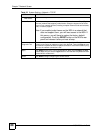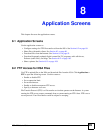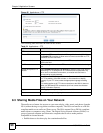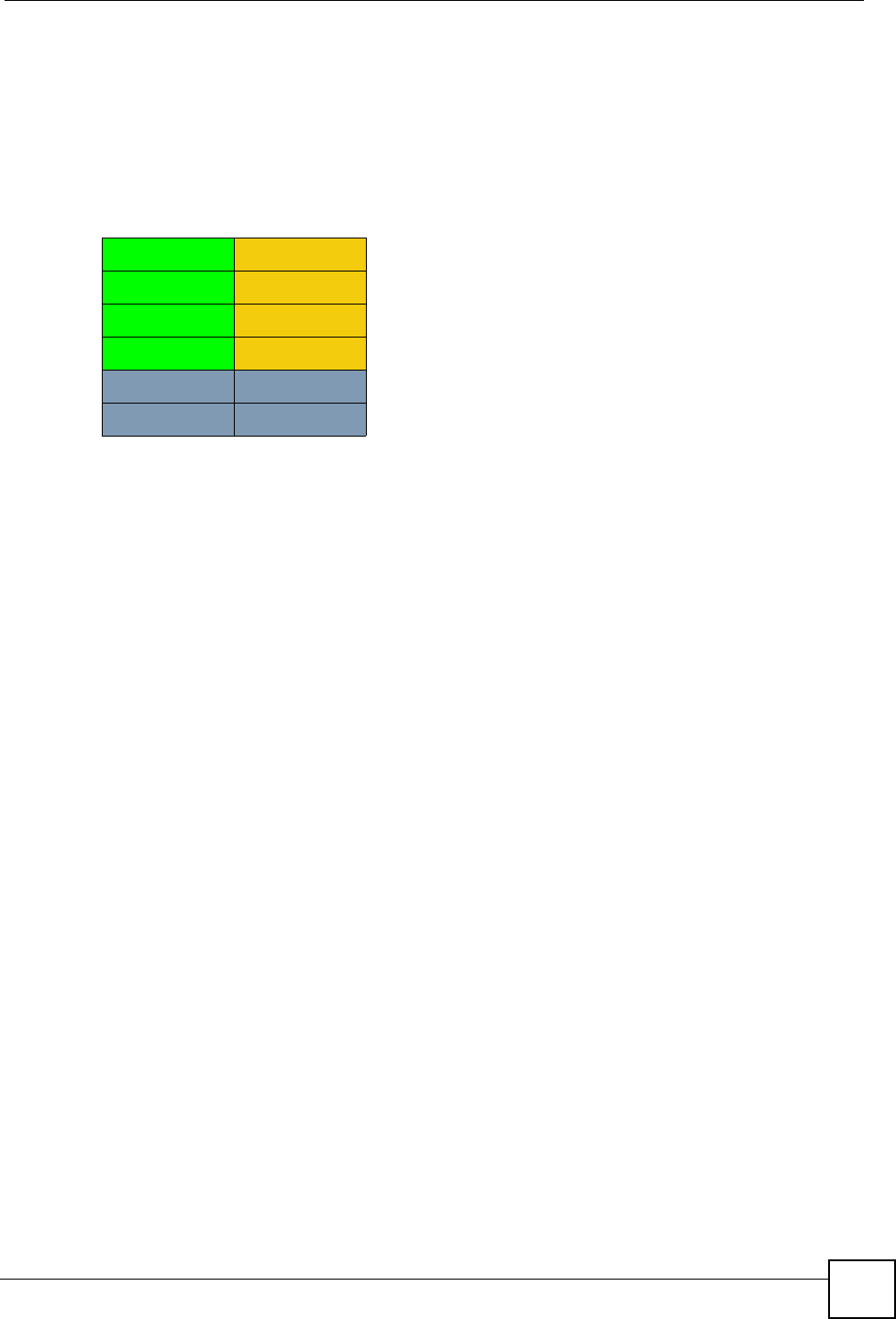
Chapter 6 Storage Screens
NSA-220 User’s Guide
83
6.9.3 RAID 1
RAID 1 creates an exact copy (or mirror) of a set of data on another disk. This is useful when
data backup is more important than data capacity. The following figure shows two disks in a
single RAID 1 volume with mirrored data. Data is duplicated across two disks, so if one disk
fails, there is still a copy of the data.
As RAID 1 uses mirroring and duplexing, a RAID 1 volume needs an even number of disks
(two or four for the NSA).
RAID 1 capacity is limited to the size of the smallest disk in the RAID array. For example, if
you have two disks of sizes 150 GB and 200 GB respectively in one RAID 1 volume, then the
maximum capacity is 150 GB and the remaining space (50 GB) is unused.
Typical applications for RAID 1 are those requiring high fault tolerance without need of large
amounts of storage capacity or top performance, for example, accounting and financial data,
small database systems, and enterprise servers.
6.9.4 RAID and Data Protection
If a hard disk fails and you’re using a RAID 1 volume, then your data will still be available
(but at degraded speeds until you replace the hard disk that failed and resynchronize the
volume). However, RAID cannot protect against file corruption, virus attacks, files incorrectly
deleted or modified, or the NSA malfunctioning. Here are some suggestions for helping to
protect your data.
• Place the NSA behind a hardware-based firewall. It should have stateful packet inspection,
IDP (Intrusion Detection and Prevention), and anti-virus (like ZyXEL’s ZyWALL UTM
products for example).
• Use anti-virus software on your computer to scan files from others before saving the files
on the NSA.
• Keep another copy of important files (preferably in another location).
Table 22 RAID 1
A1 A1
A2 A2
A3 A3
A4 A4
DISK 1 DISK 2



